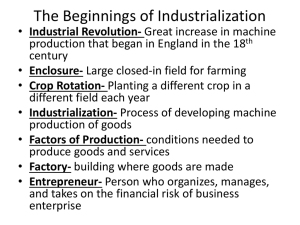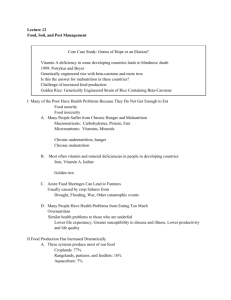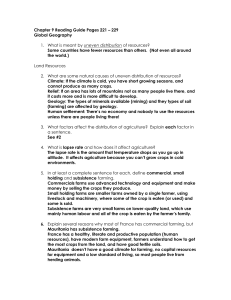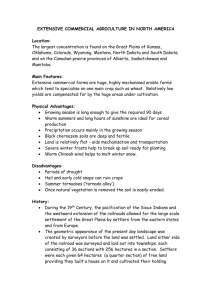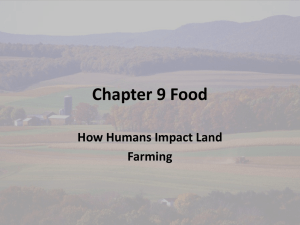www.studyguide.pk Farming Case studies Ganges Valley – Subsistence farming
advertisement
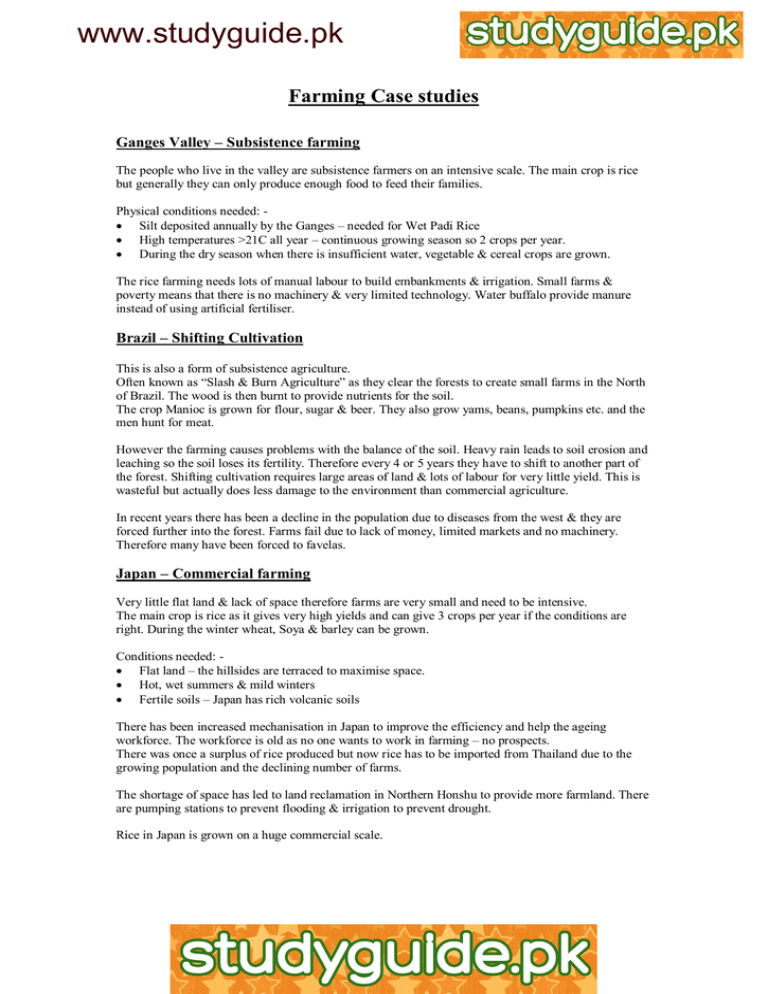
www.studyguide.pk Farming Case studies Ganges Valley – Subsistence farming The people who live in the valley are subsistence farmers on an intensive scale. The main crop is rice but generally they can only produce enough food to feed their families. Physical conditions needed: Silt deposited annually by the Ganges – needed for Wet Padi Rice High temperatures >21C all year – continuous growing season so 2 crops per year. During the dry season when there is insufficient water, vegetable & cereal crops are grown. The rice farming needs lots of manual labour to build embankments & irrigation. Small farms & poverty means that there is no machinery & very limited technology. Water buffalo provide manure instead of using artificial fertiliser. Brazil – Shifting Cultivation This is also a form of subsistence agriculture. Often known as “Slash & Burn Agriculture” as they clear the forests to create small farms in the North of Brazil. The wood is then burnt to provide nutrients for the soil. The crop Manioc is grown for flour, sugar & beer. They also grow yams, beans, pumpkins etc. and the men hunt for meat. However the farming causes problems with the balance of the soil. Heavy rain leads to soil erosion and leaching so the soil loses its fertility. Therefore every 4 or 5 years they have to shift to another part of the forest. Shifting cultivation requires large areas of land & lots of labour for very little yield. This is wasteful but actually does less damage to the environment than commercial agriculture. In recent years there has been a decline in the population due to diseases from the west & they are forced further into the forest. Farms fail due to lack of money, limited markets and no machinery. Therefore many have been forced to favelas. Japan – Commercial farming Very little flat land & lack of space therefore farms are very small and need to be intensive. The main crop is rice as it gives very high yields and can give 3 crops per year if the conditions are right. During the winter wheat, Soya & barley can be grown. Conditions needed: Flat land – the hillsides are terraced to maximise space. Hot, wet summers & mild winters Fertile soils – Japan has rich volcanic soils There has been increased mechanisation in Japan to improve the efficiency and help the ageing workforce. The workforce is old as no one wants to work in farming – no prospects. There was once a surplus of rice produced but now rice has to be imported from Thailand due to the growing population and the declining number of farms. The shortage of space has led to land reclamation in Northern Honshu to provide more farmland. There are pumping stations to prevent flooding & irrigation to prevent drought. Rice in Japan is grown on a huge commercial scale. www.studyguide.pk Brazil – Plantations This is commercial farming which was developed by European & N American merchants. The natural forest is cleared and a single “cash crop” is grown for export. Lots of capital is needed to clear & irrigate the land so most plantations are owned by TNCs. A lot of labour is needed and so companies take advantage of the cheap wages but with European managers. There is a continuous growing season and so the crops can be harvested all year. Coffee Plantations (Fazendas) Conditions needed: Gently rolling valley so not waterlogged or frosty. Deep red soil – Terra Rossa The main growing areas are Parana, Sao Paulo and Minas Gerais in SE Brazil. There are problems of overproduction and monoculture leading to deterioration of the soil. Therefore the plantations have to migrate west inland. The government now offers incentives to grow other crops to prevent the country being too reliant on one crop. Recently disease & frosts has killed trees leading to a fall in production. Brazil now supplies only 20% of the world total of coffee. Sugar Plantations – Sao Joao Estate Sugar the most important crop in Brazil. Grown on large estates W of Sao Paulo over an area up to 50km squared. Estate is self contained employing 2000 people. Conditions: Lots of moisture High temperatures Fertile, well-drained soil Much of the sugar cane is cut by machine & so there is only temporary employment – seasonal workers otherwise unemployed. During the harvest trucks with 60 tonnes of sugar cane arrive at the mill per day. Used for sugar or alcohol (for petrol). Waste is returned to field as fertiliser or burnt for power.



